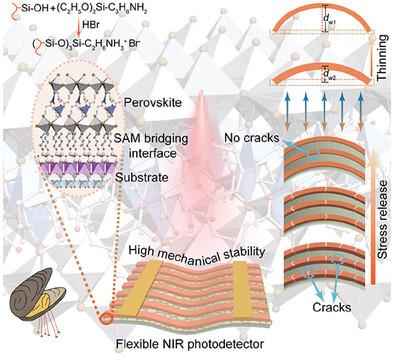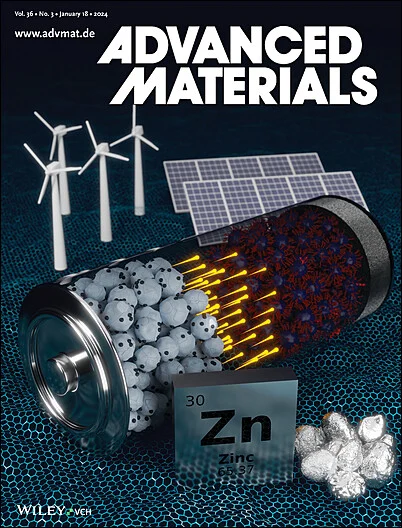Stress Release of Single Crystal Arrays Bridged by SAM Interface Toward Highly Mechanically Durable Flexible Perovskite NIR Photodetector
IF 27.4
1区 材料科学
Q1 CHEMISTRY, MULTIDISCIPLINARY
引用次数: 0
Abstract
Perovskite photodetectors with superior optoelectronic properties, lightweight, and compatibility with flexible substrates have attracted much attention in wearable electronics. However, the large bandgap, inherent brittleness, poor environmental stability, and weak interfacial adhesion interaction between perovskites and substrates hinder the application of near-infrared (NIR) wearable devices. Herein, a universal strategy to enhance the performance and mechanical stability of flexible perovskite NIR photodetector arrays is demonstrated through a combination of mussel-inspired self-assembled monolayer (SAM) bridging interface and precise modulation of the nano-array size, which enables to significantly increase interfacial adhesion, crystallinity, crystallographic orientation, and reduce mechanical stresses of perovskite single-crystal arrays. Moreover, inserting paddle-wheel metal–organic cluster ligands lead to an unprecedented small bandgap of 1.04 eV, enhanced lattice rigidity, and environmental stability for 2D perovskite. The flexible perovskite NIR photodetector arrays with superior mechanical robustness and record NIR performance are revealed with a maximum response wavelength of 1050 nm, a responsivity of 1.66 A W−1, detectivity of 6.19 × 1012 Jones, high fidelity imaging, and extra-long environmental stability. This work pioneers a new insight into the integration of high-performance and mechanically durable perovskite flexible wearable devices.

求助全文
约1分钟内获得全文
求助全文
来源期刊

Advanced Materials
工程技术-材料科学:综合
CiteScore
43.00
自引率
4.10%
发文量
2182
审稿时长
2 months
期刊介绍:
Advanced Materials, one of the world's most prestigious journals and the foundation of the Advanced portfolio, is the home of choice for best-in-class materials science for more than 30 years. Following this fast-growing and interdisciplinary field, we are considering and publishing the most important discoveries on any and all materials from materials scientists, chemists, physicists, engineers as well as health and life scientists and bringing you the latest results and trends in modern materials-related research every week.
 求助内容:
求助内容: 应助结果提醒方式:
应助结果提醒方式:


